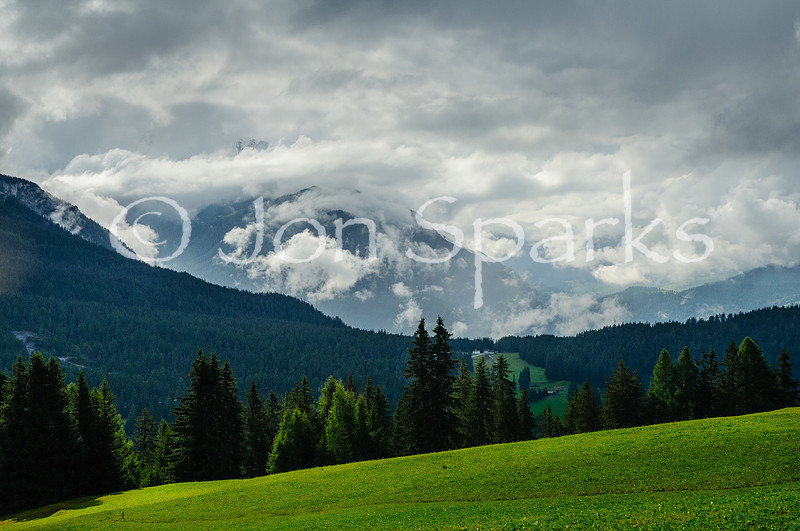Nikon D400 – will it ever happen?Check out any Nikon-related rumour site and you’ll see lots of posts, comments or queries about the possible appearance of a new ‘pro DX’ model. (DX is Nikon’s designation for cameras using the smaller APS size sensor, while FX cameras use a full-frame sensor; see this article for a fuller explanation).
If you look through the list of current Nikon cameras, some things start to stand out. First, Nikon doesn’t automatically withdraw older models when an upgrade or replacement comes along. The Nikon UK website currently lists not only the D7100 but the D7000 and even the D90, which is arguably the direct precursor of the D7000. The D5300, D5200 and D5100 are all there, as are the D3300, D3200 and D3100. With the lower-end models in particular, the product cycle is now little more than 12 months, many of the upgrades from one model to the next are incremental at best, and buying a slightly older model can be one way to get a real bargain. (If you don’t need onboard WiFi, for example, there;’s not a lot to set the D5300 apart from the D5200, apart from £150 or so).
However, one model sits rather forlornly on its own; the D300s. This appeared back in 2009. The ‘s’ suffix seems to imply that it was itself a modest upgrade to the D300 rather than a totally new camera, but that’s a bit misleading. Nikon’s model-numbering policy is opaque at best, but I think it’s fair to say that the difference between, say the D3200 and D3300 is considerably less than between D300 and D300s.
The D300, for instance, could not shoot movies; the D300s could, even if its movie mode looks pretty basic alongside current models like the D750. The D300s also added a second card slot (definitely a must for pro use) and a faster maximum shooting rate. It retained most of the other features including a very high standard of ruggedness and weather-sealing. Its control layout and interface was also very much in line with professional expectations – there are no Scene or Effects modes, for instance, just the four key exposure modes; (P) Program, (A) Aperture-priority, (S) Shutter-priority, and (M) Manual. (For a comparison of the D300s with the D7100, see this article).
Just look at what else was in Nikon’s range at the time: D3 and D3x, D700, D90, D5000 and D3000. Every one of those models has been upgraded several times. I’ve already mentioned the other DX models. In the FX range, the D3 gave way to the D3s, then the D4 and D4s. The D700 was never upgraded, but we now have D810, D750, D610 and Df, so that we now have more models in the FX family than in DX.
All this activity, and yet the D300s soldiers on, more than five years after launch, albeit now with limited availability. You can still pick one up from Jessops, for example, for £879.
This raises, the question, of course – what is Nikon playing at here? They’ve never said that they won’t produce a new professional DX model (whatever it might be called – we’ll use the tag ‘D400’ from here on), but then again, neither have they ever said that they will. This has kept the rumour sites active for years.
I can’t read the minds of the decision-makers at Nikon, and I don’t have any other kind of insider access, but it does appear that part of Nikon’s strategy is to encourage high-end users, whether enthusiast or pro, to migrate to FX. The DX models don’t just compete with other APS-format DSLRs – which basically means Canon and Pentax – but with other formats, notably mirrorless or compact system cameras (CSCs). The full-frame marketplace may be smaller but it’s also a lot less crowded.
Still, the rumour mill seems to suggest there is substantial latent demand for a professional DX SLR. Nikon may have calculated that this actually represents a very small, but very vocal, group that won’t count for very much in terms of sales. I wonder – because it seems to me that I could definitely be a potential customer for a D400 – but there are some serious provisos.
As regular readers know, I spend a good deal of my time shooting well away from any road, mostly either on foot or on a mountain bike. Naturally, I’m interested in lightening the load on my back whenever possible, but as several previous posts have discussed, I don’t want to compromise on image quality or the ability to capture fast-moving action.
In fact, there isn’t necessarily a massive difference between DX and FX in terms of body-weight. I’m currently shooting with a D600 and a D7000, and there’s very little between them in size or weight. Of course the D810, which does have a more rugged spec and better spread of AF points than the D600, is a couple of hundred grams heavier – but what really makes the difference is when you are carrying several lenses.
To cover the larger sensor, lenses for FX cameras need to be larger and heavier than their DX equivalents. You can use DX lenses on an FX camera, but the image needs to be cropped; you can also use FX lenses on a DX body, but there’s a penalty in weight and bulk. And Nikon’s DX lens range is notably lacking in what we could call ‘pro’ lenses – primes, or zooms with a constant, fast, maximum aperture.
Now there are lenses from other makers (e.g. Sigma, Tokina, Tamron), which plug at least some of these gaps, but it might not be a smart move by Nikon to bring out a camera body which encourages users to buy other makers’ lenses.
From my own point of view, most of the lenses I have are full-frame. This is partly because I need to be able to use them with FX cameras; as well as my own D600, FX cameras pass through my hands regularly for Expanded Guide purposes. And even if I had bottomless funds (which I most definitely don’t), I couldn’t assemble two full outfits because there simply is no DX equivalent for some of the lenses I use, like my 70–200mm f/4 or 300m f/4.
Without at least a core range of professional DX lenses, the appeal of a professional DX body is strictly limited. At least to me, and I suspect that’s how many others will see it too. If it saves me 200g over a D810 but I’m still carrying the same lenses, the benefit is much less than if it enables me to carry a different set of lenses and save a kilo or more.
And I also suspect that it’s the cost of introducing such lenses, not that of developing a new camera body, which has deterred Nikon from launching a D400.
I don’t underestimate the cost of developing or tooling up a new camera body, but it’s clear that there is a high degree of modularity, so that the most recent camera, the D750, shares many features with other models in the range; the sensor is similar to that in the D610 while the autofocus module is similar to the D810. It also inherits its onboard WiFi from the D5200. There’s no technical reason why Nikon could not produce a D400 body fairly quickly. But producing the right lenses to give it full system backup would be a longer and more costly task.
In addition, for users who are really concerned about weight and bulk, a D400 would emerge into a much more competitive marketplace than the D300s did five years ago. Mirrorless cameras like the Olympus OM-D series, Fujifilm X-T1 and Sony A7 models all produce excellent image quality. I’ve looked long and hard at some of these, but none of them yet fully measure up to the focusing speed of a good DSLR. Still, this is another factor which chips away at the potential market for a D400.
And there’s another strand which is keeping the rumour mills busy – the prospect that Nikon is working on a mirrorless camera, possibly a full-frame model. This may be another reason why the D400 is on the back-burner, and may never come to the front..
Shot on a D300s above Davos, Switzerland Comments
No comments posted.
Loading...
|




